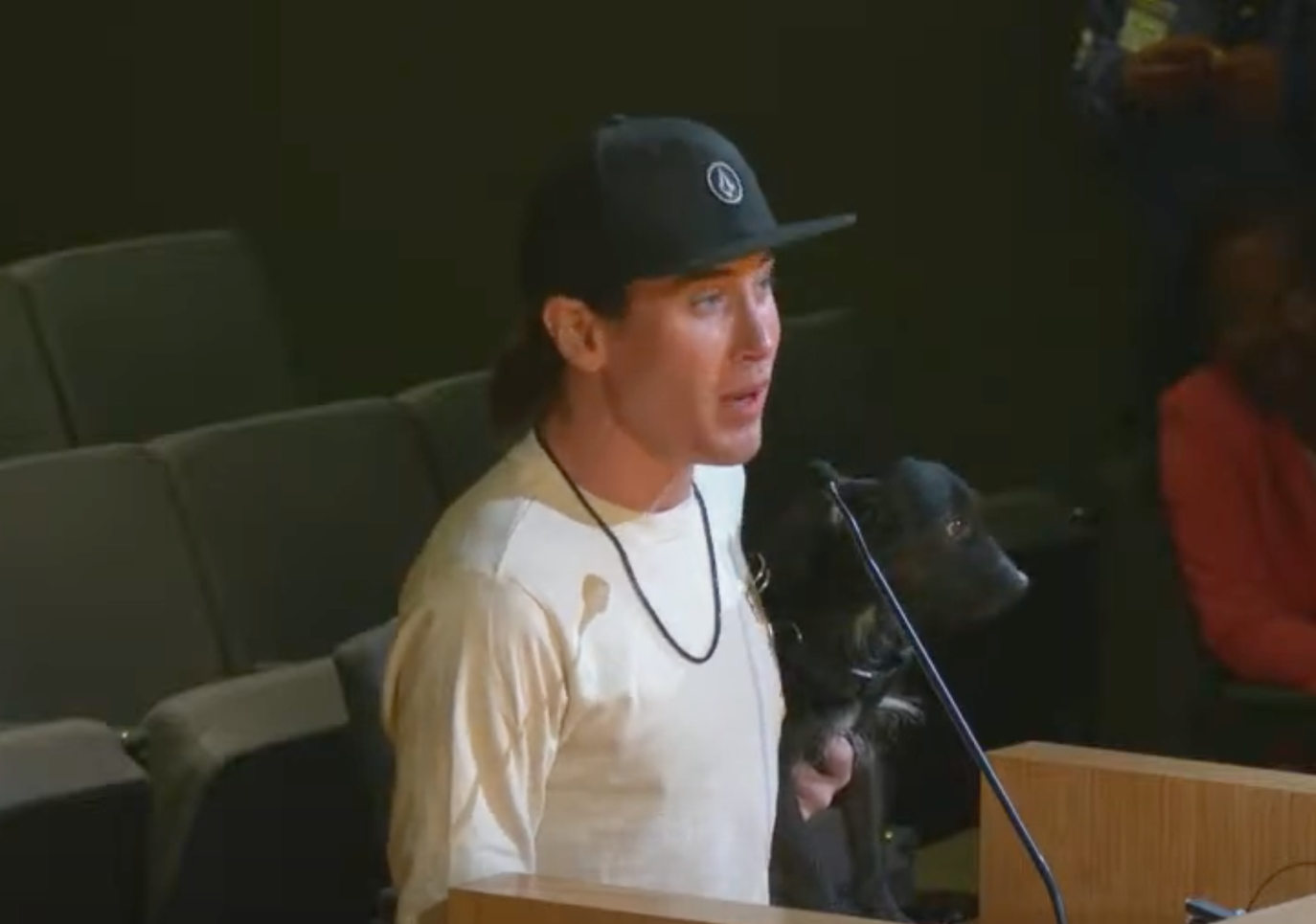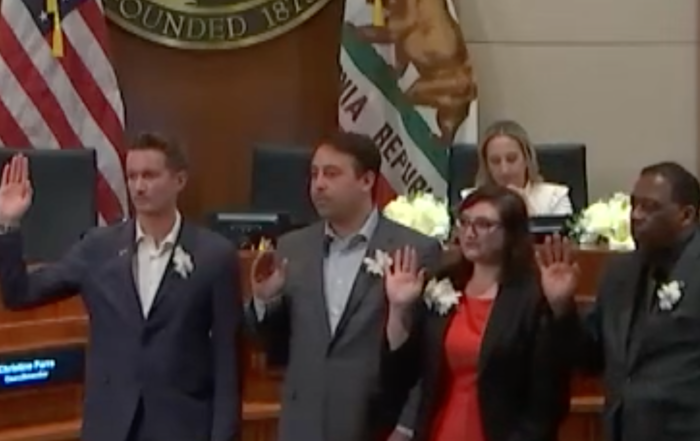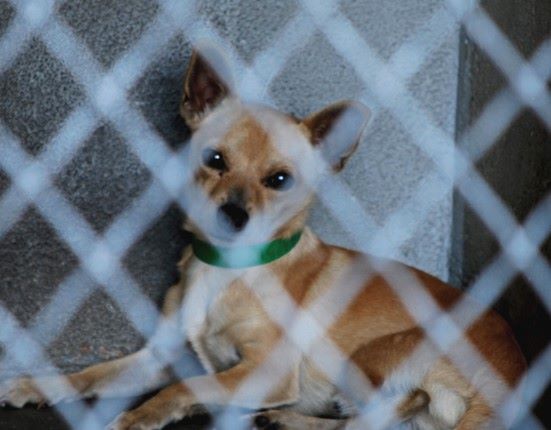Residents of West Hollywood will soon see a “Flying Lion” soaring overhead—not a mythological creature, but a drone designed to support public safety.
At Monday night’s meeting, the West Hollywood City Council voted 3-2 to approve a one-year pilot program for the use of surveillance technology to enhance public safety, including fixed real-time cameras, a real-time watch center, and a drone as a first responder. The program costs $750,000, one of the largest single investments that the city has made in new equipment for public safety, according to Mayor John Erickson and City Manager David Wilson.
The drone would operate 40 hours per week during times when criminal activity is heightened, and a contract would be established with the same company, “Flying Lion,” which is currently employed by the cities of Santa Monica, Beverly Hills, and Chula Vista for their surveillance technology.
Vice Mayor Chelsea Byers and Councilmember Sepi Shyne voted against the proposal, claiming that not enough information had been disseminated to the community regarding the military-grade equipment that would soon be deployed.
“My bigger concern with all of these things is just community buy-in and support. Before us tonight is one of the most expensive or cost-intensive items of our public safety conversations,” Byers said. “I don’t feel the community is properly engaged in the extent to which these conversations should warrant.”
As one of only three community members who came forward to address the proposal, West Seegmiller spoke in opposition to the new surveillance systems.
“Look, the big picture here is that every local municipality where these systems have been employed have eventually expanded their scale and case usage without exception,” he said. “When we look at places like the UK with the ULEZ system, once it’s fully implemented and operational, they are incredibly unpopular. In the UK, we’re seeing organized vigilantes that call themselves the Blade Runners, systemically dismantling these systems, and these are people from working-class neighborhoods. I don’t condone that type of thing, but I can understand their grievances. … We’re a creative city; let’s be a little more creative than blanket surveillance.”
According to the update prepared by the City Manager’s Department, the drone would primarily be used for operations that include search and rescue, barricaded suspects, disaster response, pursuit tracking, active shooter incidents, and documentation of crime scenes or traffic investigations. The drone is prohibited from identifying participants in legal, peaceful demonstrations as well as from violating constitutional rights in a discriminatory manner.
Others questioned whether West Hollywood would post multiple signs—like Beverly Hills currently does—advertising the use of surveillance systems.
“This is going to be an entirely different culture creation for the city of West Hollywood,” said Councilmember Shyne, who also advocated for the large sum to be spent on the homelessness crisis rather than on surveillance systems. “I would be more comfortable supporting this if we did a statistically valid survey, a mailing out to all our residents, letting them know there are going to be cameras up and down Santa Monica Boulevard, and wherever else, and drones in use, with signs that basically [say] the LGBTQ city of freedom is now becoming the city of Beverly Hills.”
Councilmember John Heilman retorted, “The LGBT city of freedom has cameras in every LGBT bar. … My point is that we need to keep the people who are LGBT, who are coming here, we need to keep them safe. The problem is right now they’re getting robbed on the street, they’re getting hassled on the street, they’re being subjected to hate crimes. Giving the sheriffs the technology to prevent that and to catch the perpetrators is what we’re talking about tonight.”
Agreeing with Heilman, Councilmember Lauren Meister said she does not share the same concerns about privacy in public spaces expressed by Shyne and Byers.
“If someone didn’t pick up after their dog right in front of my house, and I’ve got them on camera,” she said, “well, you’re out there, it’s the public space. There should be that expectation that if you’re doing something wrong, then maybe you’re going to get caught.”
Nevertheless, precautions will be taken to avoid recording images of areas with a reasonable expectation of privacy, according to the update from the City Manager’s Department.
Public Safety Manager Anita Shandi and Captain Bill Moulder noted that in late 2023, information regarding this proposal was shared with West Hollywood’s Human Services Commission, the LGBTQ+ Commission, the Public Safety Commission, and the Social Justice Advisory Board, with feedback provided to the City Council.
For future commentary from the community, Mayor John Erickson said, “I would like to identify ways that if there are complaints, how those could be lodged and then having those complaints go to the Public Safety Commission on a quarterly basis, or if that’s too much, a biannual basis, and I want to try [the surveillance system] out for a year… and then come back and reevaluate it.”
Photo of West Seegmiller addressing the council obtained via screen capture.
Stay informed. Sign up for The Westside Voice Newsletter
By clicking submit, you agree to share your email address with Westside Voice. We do not sell or share your information with anyone.








